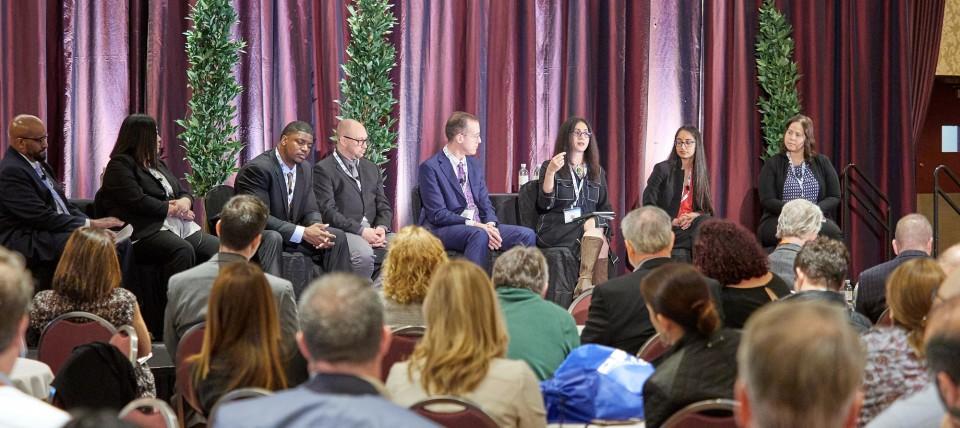🎹 Music for this post: https://www.youtube.com/watch?v=Z5vZovv8cPk.
When you are introduced to new businesspeople as a technologist, how do these people begin to see you?
What sorts of biases might they have about what they expect from you?
Why do you think that might be the case?
It is entirely possible that you might not suspect any biases. If that is the case, I hope you find something of interest in this chapter of our journey together.
Arguably, many of us in the field of technology are coarsely viewed as “engineers” by those we interact with and serve. While “engineer” typically connotes a high degree of assumed intellect, the label has a certain amount of baggage that is unwise to ignore. People tend to assume that engineers:
- Will talk above the heads of people around them from time to time
- Might view others as having an inferior degree of understanding of technical issues
- Will want to dissect details and debate minutiae
- Will unrelentingly challenge arguments that have holes or weaknesses
- Are more interested in things than in people
Take a moment to reflect on your past. Have you, dear technology leader, ever offered a simple observation about a business situation in non-technical terms, only to be asked to stop being technical? If you haven’t, then perhaps you haven’t lived!
Over the decades that I have nurtured the talents of young engineers in the workplace and in the classroom, I ask that, when they walk into a room of businesspeople for the first time, they develop an awareness of a certain propeller on their heads — a propeller that they themselves cannot see, but which is possibly quite visible to those who they are newly serving.
There is a simple way to identify whether or not your propeller is visible: your audience will come to you with solutions, rather than with problems. Have you ever wondered why so many businesspeople do this? Have you ever had the privilege of being a fly on the wall in the meetings leading up to the meetings with you or your teams?
Here is an abject lesson: throughout the world, businesspeople prepare thoroughly to provide as much detail as possible about what they want done before they meet with engineers, often to the point of becoming armchair engineers themselves, all in an effort to run out of the room as quickly as possible when the day finally comes.
- If you are a salesperson, you want to meet people and sell to them.
- If you are a CEO, you want to meet people and cultivate relationships.
- If you are an accountant, you want to crunch numbers and make projections.
- Think about every other position in your business, and you will see a trend.
When the time comes to meet with the software engineers and IT people in your business, the idea is: get in, get out, and get back to what you were doing. You want the software engineers and IT people to give you what you ask them for. You know the business, and they (sadly, all too often), simply do not. As much as those engineers know their stuff, your job is to convey to them things about your customers that they do not know as well as you do, and they need to listen to what you need.
All of this is a sort of horrible setup for bad things, I hope you can see. But I am sure you have seen it all before.
Businesspeople do this because engineers have a long history of being a pain in the ass. Your option, as a person with the label (whether you asked for it or not) of “engineer,” is to not be a pain in the ass. The best way to do that is to assume that you might be, in fact, a pain in the ass. Hence, the invisible propeller.
Now, it is entirely possible that people do this simply because they want to be helpful, or that they enjoy armchair engineering. Even in these cases, it is a fair indicator that there may be a lack of awareness of the engineer’s duty to develop an understanding of the problem that is there to be solved.
Before I go much further, I must acknowledge something important, lest I be an invisibleist. Developing a sense for this might be quite difficult for the fair chunk of technologists who are on the spectrum — not an insignificant portion of our population. I have an anecdotal belief that the history of engineering culture owes at least some part of its reputation to this, which is why I am happy to see companies like Auticon, Aspiritech, and even Microsoft address this with programs that cultivate these talents with special attention.
How do you transition from being a pain in the ass — a propellerhead — to a trusted human colleague? There is a small minefield that technologists must get through. The journey begins with steering the conversation to focus on the problem your customer is facing. To demonstrate this, I like to offer an exercise.
Imagine that you are having chest pains, and you run to your doctor, telling him: “Hey! Doc! I’m having a heart attack!”
What do you think the doctor is going to do?
I’ve asked this question in job interviews and classrooms for the better part of two decades, and the answers I have gotten run a wide gamut. In a future column, I hope to share an analysis of the answers I have collected from students over several years of guest lecturing at RIT and other schools.
But back to you: what do you think the doctor is going to do?
Is she going to apply a defibrillator? Is he going to give you aspirin? Is she going to rush you to the hospital? Is he going to ask you how you would know that, given that you are not a doctor? Or is the doctor going to ask you, “Tell me more about your symptoms?”
As the patient, do you go to the doctor with your own pre-determined diagnosis, wishing for the doctor to implement your solution to your problem? Or do you want the doctor to listen to your problems, and determine the solution that he or she thinks is best for you?
We should expect the same in our engineering relationships. However, customers expect something from engineers, and an empathic discussion is often not one of them. As a matter of fact, for engineers to thoroughly walk to the empathic, they sometimes have to risk making their customers feel like they got into more than they bargained for.
Imagine an empathic software engineer being asked to add a new field on a screen of an application. Rather than responding with “OK” (which is tantamount to our doctor applying a defibrillator without asking about symptoms), let’s suppose the engineer replies with:
“Interesting! Help me understand what your business process is.”
What do you expect could go wrong? Our customer’s reaction very well might be:
“What? I don’t have time for this – not something I expected to have to discuss with you.”
That feeling itself is valid; it’s a result of years of avoiding bad conversations with bad engineers.
A truly thoughtful engineer — one who sees the invisible propeller — has to be prepared for that sort of response.
Let’s go back to the doctor scenario. What’s one thing you hope the doctor won’t do? You hope he won’t be, well, a pain in the ass.
“How would you know that you are having a heart attack? You are not a doctor! I will be the one to tell you that you are having a heart attack!”
Yet, how often have you heard an engineer say something like that?
“What makes you think you need that field? If I add that, it could cause all sorts of problems!”
A thoughtful engineer who can envision her invisible propeller will bring a fundamental empathy to the table, and will respond with something that honors the underlying anxiety:
“Yeah, I get that. And I know your time is very valuable! I want to make sure I take a moment to truly understand your underlying problem so that I can ensure that, together, we achieve the results you expect. I will work hard not to take too much time when I do this, and my experience tells me that you’ll be happier. If now isn’t a good time, do you want to schedule something?”
Notice how the word “but” — or words like it — doesn’t appear in her response. It takes a great deal of finesse to honor the validity of your customer’s feelings, and not diminish them. There are a variety of other perfectly good approaches as well.
The goal here is to develop a relationship with your customer — a relationship where your customer begins to trust that the time spent with you is worthwhile. Through the results that you produce, your work will get easier, because your propeller will eventually, and truly, disappear.
The journey from propellerhead to trusted advisor starts with accepting the unfortunate legacy that years of engineers created before you. Those who are able to make this journey will find their careers immeasurably rewarding when compared to those who do not. As Lisa Hermsen (the Caroline Werner Gannett Professor of Humanities at RIT) once shared with me,
“The difference between an engineer who can communicate and one who cannot…is a room with a view.”
Discuss this specific post on Twitter or LinkedIn.
![[Logo]](https://theprogressivecio.com/wp-content/uploads/2020/07/ProgCIO-1024x1024.png)

![[Beanie Illustration]](https://theprogressivecio.com/wp-content/uploads/2020/09/Beanie.png)


![[Screenshot of the grids.]](https://theprogressivecio.com/wp-content/uploads/2021/04/Gridz-475x1024.png)



